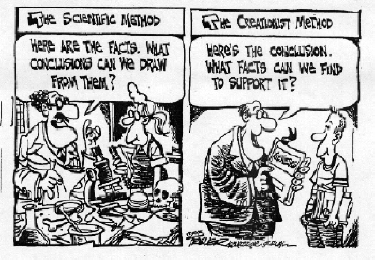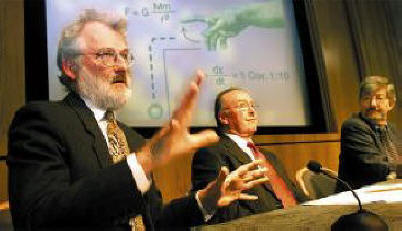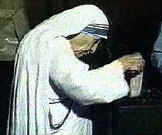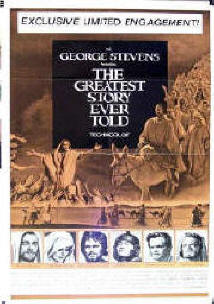|
CULTURAL
ANTHROPOLOGY
Spring 2012
|
|
|
 |
1.
Napoleon Chagnon,
Yanomamo
(Fifth
Edition),
Holt, Rinehart & Winston,
2.
Orna Johnson & Marvin Harris , Cultural
Anthropology (seventh edition). Pearson,
2007.
3. Asen Balikci,
The Netsilik Eskimo.
Prospect Heights, IL: Waveland Press, 1970.
|
|

Anthropology is most simply defined as the study of humankind. The
term, anthropology, derives from the Greek word
anthropos
meaning "man". There are three sub-fields of anthropology:
biological anthropology, cultural anthropology and archaeology.
Cultural anthropology is that sub-field within anthropology that
examines the variety of human societies and cultures throughout
different times and places. Among other things, anthropologists
are interested in how various peoples have interacted with their
environments, how they have provided for their material needs, how they
have organized themselves into social groups, the different types of
families that have existed, the various gender roles that different
peoples have adopted, the different forms of government that have
evolved, and how different people have viewed the world around them and
their place in it.
However, as a science
of human behavior, cultural anthropology attempts to
explain,
not just describe, the diversity of societies that exist today and that
have existed in the past. In other words, anthropologists want to
understand the
processes
that have created the immense variety of human lifestyles over the past
two million years. This course will introduce the student to some
of the concepts, principles and methods used by cultural anthropologists
in their study of human social systems, as well as to many of the issues
that have been raised as a result of anthropological research. The
general goal of the course is to acquaint the student with the unique
perspective that cultural anthropology offers towards an understanding
of the human condition. More specifically, the course will present
students with a
systemic,
scientific understanding of human social behavior, diversity and
evolution. By reading and discussing studies about specific groups
of people with lifestyles quite different from that of urban and
suburban United States, it is hoped that the student will come to
appreciate and understand the causes of human social and cultural
diversity and the rational basis of alternate social behaviors.
At the same time,
the course will adopt an
evolutionary
approach and emphasizes the importance of taking a longitudinal
view of contemporary issues rather than approaching them from rather
limited short term social of political perspectives.
But cultural anthropology is not just about "primitive" peoples living
exotic lifestyles in far away places. Studying the lifestyles of
other peoples should provide the student with a new understanding of the
behavior, organization and values that prevail in our own society.
As a science of human behavior, cultural anthropology has as much to say
about the workings of American society as it does about the Inuit, the
Pygmies, the Dobe
Ju/'hoansi, the Yanomamo and the many other peoples
traditionally studied by anthropologists. An important objective
of the course, then, will be to apply anthropology as a tool for
examining issues and topics in contemporary American society.
Teaching Methods:
A variety of teaching techniques will be used throughout the course,
including lectures, class discussions, small-group discussions, films, and
out-of-class assignments. In addition, reading assignments will be given
in the form of handouts distributed in class, Internet sites, email
messages and both articles and videos placed on reserve in the Trexler
Library. These different sources of information and methods of teaching
are used to complement and reinforce each other in order to increase the
depth and the scope of the student's understanding of the material
included within the course. All such material will be considered required
reading and will potentially be included on examinations.
Course Unit Instruction:
This class is scheduled to meet for 3 hours per week. Additional
instructional activities for the course include viewing selected
ethnographic films in the Trexler Library throughout the semester.
Examinations:
The following procedures will be used to arrive at a student's final grade
in this course:
|
1.
Three Exams
(25%
each)
|
75%
|
|
2.
Course Essay
|
25%
|
Written Assignments:
1. Each student will write
a 6-page (1,500-1,800 word) essay that provides a systematic
anthropological explanation of the material presented in class. The
purpose of this essay is to determine how well the student understands the
material discussed throughout the course and is able to apply the concepts
and principles presented in class to that material. This paper will be
treated as a research paper (meaning that it must be detailed and
referenced) in which the sources used will be the course readings and
class presentations. The essay is due on
Thursday, April 26th.
2.
All written assignments
MUST
be typed. Handwritten materials will
NOT
be accepted.
3. Although the
primary concern is with the quality of the ideas and analysis presented,
essays and other written assignments will also be evaluated in terms
of their adherence to accepted writing standards. They must be typed
clearly and legibly. They must also be organized, grammatically correct
and free from spelling errors. Papers must, therefore, be carefully proof
read before they are submitted. A sloppy and poorly written paper will not
receive as high a grade as a comparable paper which is neat and clearly
written, which expresses a coherent theme, and which contains few spelling
and grammatical errors. Having an idea that you cannot express clearly and
concisely is little better than not having the idea at all.
Developing good
writing skills is, thus, very important.
Grading Policy:
1. ALL
assignments and examinations must be completed or taken at the time
scheduled. Late essays will only be accepted and make-up tests will
only be given in the event of an
emergency
and will receive a 10-point
reduction in grade for each day they are late,
i.e., a score of 80 on a make-up test will be recorded as a 70, 60, 50,
etc. (Computer problems or printer dysfunction are
NOT
valid
excuses for a late paper. They indicate that the student waited
until the very last minute to complete an assignment.) Similarly,
incomplete course grades will be reduced by 10 points when they are
completed. The grade on any exam not taken or assignment not completed
will be zero. Plagiarized assignments will also receive a grade of
zero.
2.
ALL
materials assigned for reading, presented or discussed in class (including
films) or distributed in class and/or by email will be potentially included
in examinations.
3.
Attendance will not be taken, but absence from class is
NOT
an acceptable excuse for a student's failure to complete an assignment or
examination. It is the student's responsibility to obtain the
necessary information on days that he or she misses class. In
addition, a student who regularly misses class cannot expect special
consideration in the event of poor grades.
4. In
the final analysis, responsibility for completing all course requirements
rests with the student. If the student has any doubt on any matter
regarding the course, he or she should contact the instructor
BEFORE
the problem becomes insurmountable. One of the benefits of the small
size of the Muhlenberg Campus is the potential that exist for easy
faculty-student contact.
5.
Plagiarism constitutes a
violation of the Academic Behavior Code and will be dealt with
VERY STRICTLY. The Sociology
and Anthropology Department treats plagiarism cases very seriously.
Depending on the nature of the plagiarism, a student could receive a
failing grade for the course; be referred to the Dean's Office for
judicial review; and have a "VF" (violation of Academic Behavior Code)
grade entered on their transcripts. If a student is in doubt about a
specific situation, it is his or her responsibility to consult the
instructor or some other appropriate person (such as a librarian or
writing tutor) for clarification.
Extra-Credit Option:
1. Students may also
choose to complete a research paper for up to 10
extra points on the
final grade for the course. (The grade received on the research paper will
be added to a student's grade after all of the other calculations have
been made.) The research paper should be approximately 12 pages long (3000
words) and must be written on a topic approved in advance by the
instructor. The research paper will be strictly graded according to
the guidelines described at the end of the syllabus. All research paper
topics must be approved by
Thursday, October 13th.
NO
UNAPPROVED PAPERS WILL BE ACCEPTED.
All students working on extra-credit papers are expected to meet with the
instructor to discuss the progress of their research papers. The
paper is due on
Thursday, May 3rd (the last day of class).
NO LATE
PAPERS WILL BE ACCEPTED.
2.
Students writing research papers will need to obtain research materials
that are not available in the Trexler Library in order to complete a
satisfactory paper. This will necessitate either travel to other libraries
in the Lehigh Valley or extensive use of Interlibrary Loan services
through the Trexler Library. Students should be aware that obtaining
research materials through Interlibrary Loan may take several weeks and
should, therefore, start their research papers as soon as possible.
Not receiving adequate sources in time to analyze your subject and write
your paper will seriously affect the quality of the paper you submit and
the grade your paper receives.
Additional Comments:
1. I believe
that students learn better with fewer distractions. Please do not use
laptops, cell phones, PDAs or other texting devices during class. The
use of these devices in the classroom represents a distraction not only to
the student using them, but also to other students in the class and
results in students being less engaged in class discussions and
presentations. The use of these
devices also constitutes a distraction
to the instructor.
If you need to use a computer, etc. for note taking,
you must supply a written note from
the
Academic Resource Center
stating that it is necessary due to a specific disability.
2.
Students frequently approach social science classes with preconceived
ideas about the subject matter to be covered. Due to the familiar nature
of some of the topics and issues discussed, students often rely on
socially acquired concepts and explanations, many of which are
simplistic and ethnocentric.
Cultural anthropology offers specific concepts and methods of social
analysis.
Students are expected to learn the concepts and methods
presented in class and to use them within the confines of the course.
|
|
Unit:
|
TOPIC
|
READING ASSIGNMENTS*
|
|
1
|
Introduction: Taking an Anthropological Perspective
|
Life
is a comedy to those who think and
a travesty to those who feel.
|
|

!!!
One Hundred Percent
American !!!
"Philosophy: unintelligible answers to unsolvable
problems"
--Henry Adams

Horsemeat Ain't All That Bad!

Then what was it?
A Rat in My Soup

Its
Not Just for Flushing Anymore
For all those people who love Japanese food
|
3.
Chagnon, "Prologue" & Chapter 1.
* *
*
5.
Harris & Johnson, Chapters 1 & 2.
6. Sharp, "Steel Axes for Stone-Age Australians."
(R)
An Animal's Place
|

|
Hairy 31-year-old
Burmese woman with her 14-month-old son, who has long hair growing
from his ear.
|
|
|

Elaine Davidson, the most
pierced woman in the world, shows off some of her 2,520 piercings at the
50th anniversary of the Guinness World Records in London.
Code of Ethics
* *
* * *
|
|
2
|
Thinking Critically |
Militant Agnostic!
I don't know and you don't either.
|
|

"THE NEW LOGIC: It
would be nice if it worked.
Ergo,
it will work."
-- H. L. Mencken
Bottled
Water: Pure Drink or Pure Hype?

Occam's Razor
Bread
Is Dangerous !
Dihydrogen
Monoxide Alert
Snopes.com:
Urban Legends Reference Page
| |
"A concern with knowing the world, rather
than advocating a view of the world because it confirms some
political, ideological, or religious project, has always been
fundamental to scientific philosophy."
--Lawrence Kuznar,
Reclaiming a Scientific Anthropology (1997)
|
|

Fast Food Nutrition Guide
| |
"The aim of scientific
research is to formulate explanatory theories which are: (1)
predictive (or retrodictive), (2) testable (or falsifiable), (3)
parsimonious, (4) of broad scope, and (5) integratable or cumulative
within a coherent and expanding corpus of theories."
--Marvin
Harris (1994)
|
|

Masada: the Real Story
|
Film: "A Man
Called Bee" (R)

"Sacred Cows make the best hamburger."
--Mark Twain
|
Handouts |
History
Stumbles Again |
|
"Extraordinary
claims require extraordinary evidence."
--Carl
Sagan
|
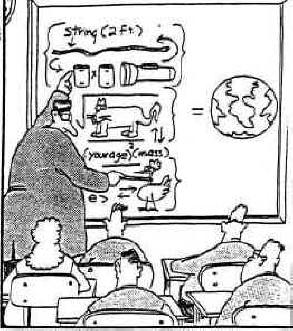
Creationism
Explained
* *
*
| |
"Every 15 seconds, in
the United States someone comes up with a bogus statistic."
--Richard B.
Felson
|
|
| |
According to a Harris poll taken on August 12, 1998,
Americans are three times as likely to believe in the Virgin
Birth of Jesus (83%) as in evolution (28%).
(NewYorkTimes)
|
|
| |
On the
Life of Jesus
"We do not have enough material to write a respectable obituary."
--M.S. Enslin,
The Prophet of Nazareth
|
|
|
|
|
|
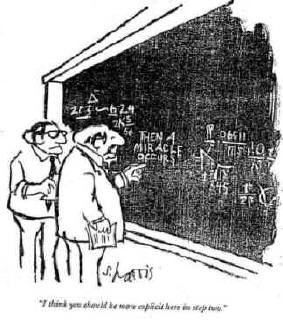
| |
Western Military Involvement in the
Middle East
The U.S. invasion of Iraq was
undertaken largely by American and European soldiers. Similarly, the
current fighting in Afghanistan and Libya is under the jurisdiction of
NATO, a combined American and European military force. The
citizens of Western Countries (Americans and Europeans) are told in
each of these cases that their military forces are undertaking
military operations for humanitarian purposes only, not for conquest
or domination, or that they are undertaken as part of the "War on
Terror" ("We're fighting the terrorists over there so that we
don't have to fight them here"). Most Westerners believe this and usually support
military invasions. It is interesting that at the Berlin
Conference in 1885 in which European powers divided up Africa into
spheres of influence that determined which areas would be colonized by
which country each of the countries ennobled their colonization by
agreeing to
"bind themselves to watch over the
preservation of the native tribes, and to care for the improvement of
the conditions of their moral and material well-being ...
instructing the natives and bringing home to them the blessings of
civilization."
The history of European colonization
makes a mockery of the above statement. European colonization of
Africa (and elsewhere) was undertaken for the benefit of Europeans,
not Africans. This is clearly illustrated by British torture
(including castration) of Kenyans fighting for independence from Great
Britain during the 1950s and France's brutal response to the
Algerian struggle for independence in the 1960s. Both of
these events took place after nearly a century of colonial rule in
which the colonized peoples existed as second-class citizens in their own
countries. Numerous other examples can be given of European
exploitation of colonized peoples, including Madhusree Mukerjee's (Churchill's
Secret War) detailed account of the
British Government's refusal to send surplus food to
prevent the famine in India in 1943 that killed an estimated 2-3
million people.
Similarly, in 1953 the U.S.
Government, working through the CIA, overthrew the democratically
elected government of Iran and placed the Shah on the throne.
This was done largely to retain Western control of Iran's oil and to
counter the Soviet Union's gaining an influence in Iran. The
Shah was given carte blanche to purchase any weapons he wanted,
including those needed to suppress Iranian dissidents. The Shah
became one of the most brutal dictators in the Middle East, who
increasingly relied on his secret police (SAVAK) to maintain control.
Opposition to the Shah eventually led to the Iranian Revolution in
1979 that brought the Ayatollah Khomeini into power and the clerics
who rule Iran today. Similarly, the U.S. Government supported
Saddam Hussein's invasion of Iran and the eight-year war that followed
in which an estimated one million people were killed, even though
American officials knew at the time that Hussein was employing
chemical warfare (including mustard gas) against Iranian soldiers and
civilians, and that he had even used them against the Kurds in Iraq.
When the Soviet Union invaded
Afghanistan in 1980, the U.S. provided military and logistical support
to the Mujahideen
(Muslim jihadists) resisting the Soviet invasion, The U.S. spent
hundreds of millions of dollars per year supporting the Mujahideen,
including arming them with shoulder-launched Stinger missiles capable
of shooting down Soviet attack helicopters. The CIA
also worked with local Afghans and with Saudi Arabia to recruit 35,000
Jihadists from some 40 Arab countries to come to Afghanistan to fight
along side the Afghan Mujahideen. Prominent in that recruitment
process purportedly were Osama bin Laden and Sheik Omar Abdel-Rahman
(the blind cleric behind the World Trade Towers bombing in 1993).
Once the Soviets pulled out of Afghanistan, U.S. interests in helping
the Afghans ended. The U.S., thus, curtailed its support of the
Afghans and left the various factions in Afghanistan to fight among
themselves to run their country. It was during this struggle
that the Taliban emerged victorious and came to control Afghanistan.
Most Americans know very little history
and are completely unaware of the significant role that their
government and the governments of Europe --especially Great Britain
and France-- have played in creating the current conditions that exist
throughout the world, especially in the Middle East. Every
single country in the Middle East, Africa and Asia (except Japan) was
at one time a European colony, and both the former colonists and
increasingly the U.S. have worked steadily over the past century or
more to maintain control of events in the region, including
establishing and maintaining governments that advanced their
interests. How might an understanding of the
actual history of Western involvement in the Middle East help us gain
a better insight into contemporary developments in this region?
What do theories in political science have to say about why political
actors such as countries act the way they do and implement the
policies they do? How might an application of the concepts of
emic
and etic
enhance our understanding of such actions?
How might all of these approaches
help us to be critical observers of actions taken in our name?
|
|
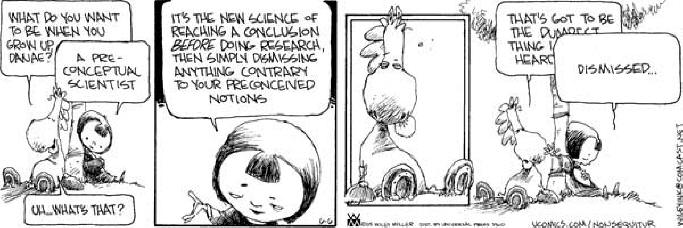
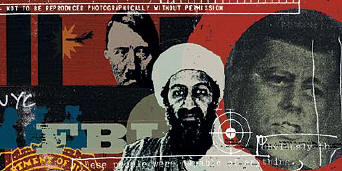
Conspiracy
Theories

* *
* * *
|
|
In 1900, there were
approximately 500,000 deer in the U.S. Today, there are almost 20
million deer in the
U.S. The expansion
of the deer population, combined with the redistribution of the American
population away from urban centers, has resulted in increased contact
between the two populations and, consequently, in an increase in the
incidence of Lyme disease.
|
|
* *
* * *
| |
U.S. Forest Facts
1. About 33% of
the U.S. land area, or 298 million ha (737 million acres), is forest
land.
2. The nation's
forest land area is still about two-thirds the size it was in the year
1600, in spite of the conversion of 370 million acres of forest land to
other uses, principally to agriculture.
3. More trees
are growing in America's forests today than at any time since the early
1900's.
4. In 1900,
forest growth rates were a fraction of harvest. Today, overall annual
forest growth exceeds harvest by 37%.
5. Net annual
forest growth has
increased 62% since 1952, and total growth per acre has increased 71%.
6. Nationally,
standing timber volume per acre in U.S. forests is 30% greater today
than it was in 1952.
7. On a per acre
basis, net annual tree growth in the U.S. is 52 cubic feet compared with
27 in Canada and 24 in Russia.
8. Annual growth
in National Forests now exceeds harvest by more than 55%.
_________________________________________________________________________________________
SOURCE: The
Bugwood Network (The University of Georgia - Warnell School of Forest
Resources and College of Agricultural and Environmental Sciences)
| |
"Some people have this
vision -especially back East- that we're running out of trees.
We're not running out of trees. We're running out of agreement
on what to do with all these trees."
--Jack
Ward Thomas, former chief of the U.S. Forest Service.
|
|
|
|
|
* *
* * *
|
|
Politics and Victimhood
“Unfortunately, claiming victim
status does not itself bring sound ethical choices. Stalin and
Hitler both claimed throughout their political careers to be
victims. They persuaded millions of other people that they too
were victims of an international capitalist or Jewish
conspiracy. . . . No major war or active mass killing in
the twentieth century began without the aggressors or
perpetrators first claiming innocence and victimhood. In the
21st century we see a second wave of aggressive wars with victim
claims in which leaders not only present their peoples as
victims, but make explicit reference to the mass murders of the
20th century. The human capacity for subjective victimhood is
apparently limitless, and people who believe that they are
victims can be motivated to perform acts of great violence."
--Timothy Snyder, Bloodlands: Europe Between Hitler and
Stalin (2010).
|
|
|
|
|
And Jesus said . . .
"Give not that which is holy
unto the dogs, neither cast
ye your pearls
before swine."
--Matthew 7:6
* *
* * *
|
|

TONY SOPRANO'S AMERICA:
The Criminal Side of the American Dream. David R.
Simon, Boulder, Colo.: Westview Press.
|
Yagahttabekiddin!
Tony Soprano's America by David R. Simon, analyzes the show . . . from a sociological perspective.
Simon, a research associate at the University of California, Berkeley, and
an adjunct professor at the University of North Florida, spends most of
his time lecturing us on American wickedness. For him, ''The Sopranos'' is
''a symbol of our national pathologies.'' Crowding virtually every page
with statistics, he expounds on the military-industrial complex, the
Warren Report, Vietnam, Iran-contra,
Enron and so on. Occasionally
he returns to Tony's ''inauthentic existence'' and his organized-crime
family, which represents ''the tip of a transnational crime iceberg.''
---David Kelly, "Deconstructing the Sopranos".
New York Times,
September 15, 2002
|
|
|
|
"Disputes
within anthropology have a way of becoming blood feuds.
Virtually all of the field's leading figures have been struck by
poison arrows. Margaret Mead? Dupe! Franz
Boas? Spy! Colin Turnbull? Hoaxer! Marshall
Sahlins? Imperialist! Indeed, the excessive ferocity of
anthropological warfare has fractured the discipline and tarnished
its image. It's become the academic equivalent of 'The Jerry
Springer Show.'"
--New York Times,
October 8, 2000
|
|
* *
* * *
*
* * * *
First
Exam:
(Sample test)
*
* * * *
|
|
3
|
Ecology, Adaptation
and
Evolution
|
Ecology begins at home: Clean up your
room. |
| |
MALTHUSIAN
NEOCOLONIALISM
"The
Malthusian motive: the will to control the population of the poor rather
than the consumption of the rich; the desire to eliminate poverty by
reducing the numbers of the poor rather than the inequalities of
society. . . . If we claim that there are too many people on
the earth, then why are we so sure that we are not the excess ones --we
Westerners who individually consume and pollute as much as 50 or more
African or Indian peasants? In all my years in the field of
population, I have never one single time heard a member of the
population establishment say that there were too many upper-middle class
white Anglo-Saxon Protestants in the world.
--Pierre Pradervand, "The Neo-Malthusian
Myth." Africa
Report
(July/August)1974:34-37.
|
|

|
|
"The richest fifth of the world's people consumes 86 percent of
all goods and services while the poorest fifth consumes just 1.3
percent. Indeed, the richest fifth consumes 45 percent of all meat
and fish, 58 percent of all energy used and 84 percent of all
paper, has 74 percent of all telephone lines and owns 87 percent
of all vehicles."
--Kofi
Annan
--United
Nations
Secretary General
|
|
Every minute
the sun showers the earth with more energy than the world's entire
population consumes in a
year.
"Psychiatry:
the care of the id by the odd."
--Anon.
Lola:
A Cultural Ecology Tale
Working
Time Needed to Buy a Big Mac
| |
The Good Life!
According to
The Economist (August 9, 2003), Americans receive an average of
16 vacation days per year (but most workers only take 14). By
contrast, Europeans receive far more vacation days per year than do
Americans: Italians receive 42; French receive 37; Germans
receive 35; and the British receive 28. Over the past 20
years, average annual working hours have increased in the U.S., but
decreased in Europe. America's higher level of productivity is
attributed by many economists not to our greater economic
efficiency, but rather to the fact that we work more hours than
anyone else. Americans now work, on average, 200 hours per
year more than the Japanese, the world's former most industrious
nation.
|
|
| |
Climate Change Skeptics
Bet
$10,000
on Cooler World
| |
"It takes approximately 3,000 liters of
water to grow enough food to feed one person for one day -- or about 1
liter for each calorie consumed."
(The
Economist,
Sept. 2, 2006)
|
|
 |
|
|
1.
Harris & Johnson, Chapters 5, 6 & 7, plus pages 290-291.
2.
Chagnon, Chapter 2.
3. Lee,
Environment and Settlement &
Subsistence: Foraging for a
Living.
4 . Turnbull,
The Importance of Flux in Two Hunting Societies
5. Abruzzi,
Population Pressure and Subsistence Strategies among
the Mbuti Pygmies
6. Balikci, Chapters 1 - 2.
Film: Nanook of the North
(R)
The Hunters
(R)
Ju/'hoansi
Ecology (ppt)
Inuit Ecology
(ppt)
Pygmy Ecology
(ppt)
Sacred
Cow (ppt)
6. Balikci, Chapters 7 - 8.
7. Mowat, "The Blood in Their Veins."
(R)
* *
*
The following four readings will NOT be included on the exam.
|

Yuppie
Environmentalism!

Digestion
Machine
| |
Christmas and the Economy
In 2002, consumer
spending accounted for 70% of U.S. GDP. Consumer spending accounted
for 60% of GDP in Italy and Spain and 55% in Japan and France.
Given the importance of consumer spending to the survival and
well-being of the economy in the U.S. and other industrial
societies, it makes sense from an anthropological perspective that
these countries would have evolved rituals that would function to
promote consumer spending. Christmas is just such a ritual.
Over 50% of consumer spending in the U.S. takes place during
October, November and December. It would also make sense that
industrial countries such as China and Japan, which have very few
Christians and no Christian tradition, would also adopt Christmas as
a national holiday.

Christmas in China

Christmas in
Japan |
|
|
|
| |
Equality in America?
According to the U.S.
Census Bureau, the share of national income going to those in the
top fifth of earners in the U.S. rose from 44% in 1973 to 50% in
2000. The share going to the top 1% rose to 15% in 1998, higher
than it has ever been since the second world war.
Take wealth rather
than income, and America's economic inequality is even more
startling. The wealthiest 1% of all households controls 38% of
national wealth, while the bottom 80% of households holds only
17%.
--The Economist
(Sept. 6, 2003)
|
|
|
|
|
|
| |
After the
Animal Liberation
Front —
which the FBI calls a terrorist organization — “freed” 10,000 mink
from a farm near Sultan, the saboteurs didn’t hang around to see
what happened next. About 9,000 of the coddled predators starved
to death, were hit by cars or recaptured, while some 1,000 hungry
survivors are now going after chickens, ducks, cats, geese and any
other small animals they can get their claws on, according to the
Seattle Times. A mink industry group, Fur Commission USA,
says farm-raised mink can’t survive in the wild; the animal-rights
group disagrees. A similar mink-liberation in England almost
caused the extinction of a rare water vole in 1998.
--High Country News (Sept. 29, 2003)
|
|
|
|
|

--The Economist
(Sept. 6, 2003) |
|
|
|
|
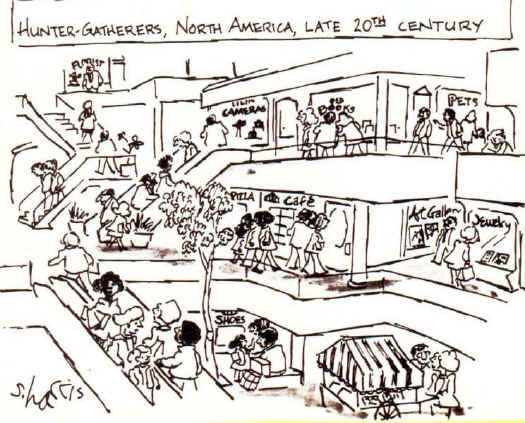
"Sociology
is the outhouse in the grove of academe."
--H.L. Menken
|
|
4
|
Kinship and Social
Organization
|
It
is one of the cruelties of life that you
don't get to choose your relatives.
|
|

A
young Ju'hoansi woman
nearing
the age of marriage.
| |
MORMON WOMEN AND POLYGAMY
"The American newspapers report that on January 13th an indignation
meeting was held at the Salt Lake City, at which about three thousand
women attended, and all men except the reporters were excluded. The
object was to protest in the most earnest manner against two Bills
recently brought into the Federal Congress for the suppression of
polygamy. They also state that the Legislature of Utah has passed a
Bill giving women the suffrage. If this be true, and if the three
thousand indignationists can influence the whole twenty-five thousand
in Utah, polygamy is not likely to be put down by the Federal
Congress."
--The British Medical Journal,
Feb. 26, 1870
|
|
|
|
Evolution of American Eating
Behavior
"Currently, 47% of the money
Americans spend on food pays for restaurant bills --up from 25% in
1955. There are about 70,000 restaurants in the U.S. --12,000 more
than the previous year. The fastest growing sector was take-out
restaurants; 58% of food establishments cater to take-out customers."
--International
Herald Tribune (1-11-03)
|
|
|
1.
Harris & Johnson,
Chapters 8 & 9.
2.
Chagnon, Chapter 4.
3.
Balikci, Chapters 3 - 6.
* *
*
4. Hillman, "The
Occurrence of Polygamy." (R)
5. Goldstein,
When
Brothers Share a Wife.
6. Cohen,
"Disappearance of the Incest
Taboo."
(R)
7.
Incest Laws in the U.S.
Kinship and Social Organization
(ppt)
Yanomamo Marriage
(ppt)
Polygamy
(ppt)
Incest (ppt)
Handouts

Modern
Arranged Marriages

Brideprice in Ancient Israel
|
|
| |
The Levirate in the Bible
Deuteronomy 25
5
If brothers are living
together and one of them dies without a son, his widow must not marry
outside the family. Her husband's brother shall take her and marry her
and fulfill the duty of a brother-in-law to her.
6
The first son she bears shall carry on the name of the dead brother
so that his name will not be blotted out from Israel.
7 However,
if a man does not want to marry his brother's wife, she shall go to
the elders at the town gate and say, "My husband's brother refuses to
carry on his brother's name in Israel. He will not fulfill the duty of
a brother-in-law to me."
8
Then the elders of his town shall summon him and talk to him. If he
persists in saying, "I do not want to marry her,"
9
his brother's widow shall
go up to him in the presence of the elders, take off one of his
sandals, spit in his face and say, "This is what is done to the man
who will not build up his brother's family line."
10
That man's line shall be known in Israel as The Family of
the Unsandaled. |
|
*
* * * *
*
* * * *
Second
Exam:
(Sample test)
*
* * * *
|
|
5 |
Gender-Related Behavior |
The
most effective way to remember your wife's
birthday is
to forget it once.
|
|

"There are more methodological problems in
regards
to the study of cognitive sex differences
and
sex differences in general than there are actual
sex
differences."
--Dr.
Carolyn N. Jaklin

The Opt-Out Revolution

The
Widows Battalion

Black
Widows: Female Murderers
| |
"I
judge a woman and a horse by the same criteria: legs, head and rear
end."
--Helena Rubenstein
|
|
| |
"A woman's
body is a work of art. A man's body is like a Jeep. It's for
getting around."
--Elaine Benes (Seinfeld)
|
|

Men!

A Woman's Mouse |


Jenna Talackova
Film:
Fight to Be Male
* * *
4.
Harris & Johnson, Chapter 14.
5.
Friedl,
Society and Sex Roles
7.
Cronk,
"Parental Favoritism towards Daughters," (R)
* * *
10. Soitoti,
"The Initiation of a Maasai Warrior."
(R)
11.
Sillah, "Bundu Trap."
(R)
Films:
Female Genital Mutilation
Womanhood and Circumcision:
Three Maasai Women Have Their Say
* *
*
"What's the point of having this superior military
you're always talking about if we can't use it?"
--Madeleine Albright (former Secretary
of State) to Colin Powell (former Secretary of Defense).

Armed Iraqi women
assembled in Tikrit
to demonstrate their
readiness for a possible war.
| |
The
Myth of Female Innocence
1. Women commit the majority of child homicides in the U.S.
2. Women commit the majority of physical child abuse.
3. Women commit about 25% of the child sexual abuse.
4. Women are primarily responsible for infanticide.
5. 30% of the women who killed men in
one Chicago study had previous arrest records for assault, battery,
and weapons charges.
6.
46%
of
90 lesbian couples surveyed in a 1990 study
reported that they experienced “repeated acts of violence in their
relationships.”
|
|

Jihad's Women
Cheerleader for Female Suicide Bombers
|
|

| |
“Good looks are a woman's most fungible asset,
exchangeable for social position, money, even love. But, dependent
on a body that ages, it is an asset that a woman uses or loses.”
--Nancy Etcoff, a psychologist, author
of “Survival of the Prettiest”, quoted in The Economist (May 22nd
2003)
|
|
*
* * * *
|
|
6
|
Politics, Political Organization,
Conflict and Warfare
|
Stop
repeat offenders! Don't re-elect them! |
|
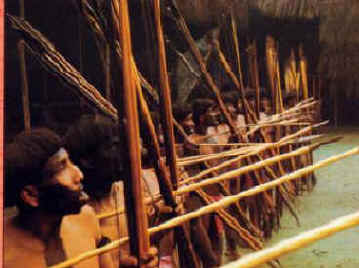
Yanomamo
Warriors

|
Power vs. Democracy
Sadam Hussein won
100% of the votes in the 2002 Iraqi election. To many
Americans, this was proof that the Iraqi elections were unfair and
invalid. However, the overall U.S. congressional re-election rate
(including both the House and the Senate) normally exceeds 90%, and in
both
1998 and 2004 was nearly 98%.
How different, then, are American elections
from those in
countries such as Iraq, Argentina and Zimbabwe whose elections the
U.S. insists must be monitored by international organizations in order
to make sure that they are fair? Might not all of these
situations, including the U.S., represent examples of the fact
that those in power can and do exploit the advantages of power in order to
maintain power? Should American elections,
then,
also be monitored by international organizations in order to make sure
that they are fair? |
German
Engineering vs. Arab Technology
"Revolution: an abrupt
change in the form of misgovernment."
--Ambrose Bierce
| |
On Victimhood
“Unfortunately, claiming victim status does not itself bring sound
ethical choices. Stalin and Hitler both claimed throughout their
political careers to be victims. They persuaded millions of other
people that they too were victims . . . . No major war or active
mass killing in the twentieth century began without the aggressors or
perpetrators first claiming innocence and victimhood. In the 21st
century we see a second wave of aggressive wars with victim claims in
which leaders not only present their peoples as victims, but make
explicit reference to the mass murders of the 20th century. The human
capacity for subjective victimhood is apparently limitless, and people
who believe that they are victims can be motivated to perform acts of
great violence."
--Timothy Snyder,
Bloodlands
(2010)
|
|
| |
"The number
of Americans in prison exceeded 2 million last year, according to a new
Justice Department report. This means that one person in every 142
is in the slammer at any one time. America's jail population --the
world's largest-- has nearly doubled since 1990." (The
Economist,
April 12, 2003:6)
|
|
|
1. Harris & Johnson, Chapter 10.
3.
Balikci, Chapter 9.
2. Chagnon, Chapters 5, 6 & 7.
3.
Anderson, "Drugs, Violence and Street
Crime." from
Code of the Street.
(R)
Films: The Feast
(R)
Among the Wild Chimpanzees
(R)
Yanomamo Warfare
(ppt)
* *
*
The Story of Sun-tzu
Biker
War in California
| |
ON POWER
"Henry Kissinger was guilty of
understatement when he said that power is the ultimate aphrodisiac. In
fact, power is the ultimate life-improver tout court. Powerful people
not only have more friends than the rest of us. They also enjoy better
health. Numerous studies demonstrate that low status is more strongly
associated with heart disease than physical hazards like obesity and
high blood pressure.
The benefits of power have grown dramatically in recent years. CEOs
and other C-suite types have seen their salaries surge at a time when
the median wage has either stagnated (in the United States) or grown
slowly (in Europe). Politicians have learned how to monetise their
pull. The Clintons earned $109m in the eight years after they left the
White House. Tony Blair has turned himself into a wealthy man in the
three years since his retirement from national politics." (The
Economist,
September 9, 2010)
|
|
Colonization and Resistance
in North America and Palestine
| |
ON TERRORISM
"There are those who say
that to kill Martin (a British sergeant) is terrorism, but to attack
an army camp is guerrilla warfare and to bomb civilians is
professional warfare. But I think it is the same from the moral point
of view. Is it better to drop an atomic bomb on a city than to kill a
handful of persons? I don’t think so. But nobody says that President
Truman was a terrorist. All the men we went for individually — Wilkin,
Martin, MacMichael and others — were personally interested in
succeeding in the fight against us. So it was more efficient and more
moral to go for selected targets. In any case, it was the only way we
could operate, because we were so small. For us it was not a question
of the professional honor of a soldier, it was the question of an
idea, an aim that had to be achieved. We were aiming at a political
goal. There are many examples of what we did to be found in the Bible
— Gideon and Samson, for instance. This had an influence on our
thinking. And we also learned from the history of other peoples who
fought for their freedom — the Russian and Irish revolutionaries,
Garibaldi and Tito."
--Yitzak Shamir
SOURCE: Bethell Nicholas, The Palestine Triangle: The
Struggle between British, Jews, and the Arabs, 1935-48 (1979), p.
278.
* * *
---Yitzak Shamir was a former Israeli Prime Minister who was also
one of the leaders of Lehi [a.k.a. "The Stern Gang,"], an
Israeli "terrorist" organization that fought both the British and the
Palestinians during the Israeli struggle to establish the State of
Israel in the 1940s. In this quote, he is responding to charges that
by performing assassinations, bombings and attacks on Palestinian
civilians, Israeli independence fighters were committing terrorism. Is Shamir's argument any different than that used by Hamas, Hezbollah and
Al Qaeda?
|
|
|
|

U.S. Elections
| |
Drug Violence
Below is the link to
an
article which discusses how the Mexican cartels have begun to grow
marijuana in the U.S. in part to circumvent the U.S. Border Patrol. It
indicates that the largest cartels are operating marijuana "grows" in
several U.S. states. They have even begun to use National Forests, due
to the isolation they provide. It is rather interesting that, while
most Americans stand aghast at the wealth, power and violence
associated with the cartels, most Americans seem to ignore the fact
that it is Americans themselves who fund the cartels, and that this is
not the first time Americans have funded such violent criminal
organizations. According to most estimates, marijuana provides up to
75% of the Mexican drug cartels' revenues. This means that the cartels
and the violence they produce are being funded, not by crackheads and
heroin addicts, but by your average recreational American pot smoker
--your average Joe. This was the same person who funded organized
crime (and all of the violence it produced) in Chicago, Detroit, New
York and dozens of other American cities during prohibition. The
simple fact is that if you make a popular product illegal, you will
create a black market for it, increase its street value and lead to
individuals and groups fighting to dominate or control its trade. It
is simple supply and demand. Just as the cartels are getting rich on
pot, the mob got rich on alcohol and prostitution during the 1920s.
Gang wars in U.S. cities today are also based on the control of
lucrative drug distribution territories. This is no different than the
spectacular rise in Plains Indian warfare that occurred during the
19th century as increasing numbers of Indians competed with one
another over the declining numbers of buffalo whose hides they sold to
trading posts established throughout the mid-West to meet the
increased demand for buffalo products in the cities of the U.S. and
Europe. In the same way, the violence in Mexico and in the streets of
America -past and present- is caused by competition over the sale of a
resource made increasingly valuable by an increasing demand for it
among American consumers and a restricted supply caused by legal
authorities to prevent its distribution. And ironically, each success
at decreasing the available supply only increases a drug's street
value in the U.S., and thus the profits that the cartels can earn by
providing it. So, Americans create the violence in Mexico in two ways:
by increasing the demand for pot in the U.S. by consuming it in
greater and greater quantities; and by restricting the supply of
marijuana by making it illegal and by imposing restrictions on its
importation. I guess you would call this a lose-lose situation.
Indeed, the whole situation is best expressed in a famous quote taken
from Pogo, a popular cartoon of the 1950s & 1960s . . .
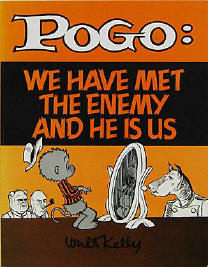
Mexican
Cartels Running Pot Farms in U.S. National Forest
|
|

On Democracy
| |
As it was written . . .
"As
democracy is perfected, the office of president represents, more and
more closely, the inner soul of the people. On some great and
glorious day the plain folks of the land will reach their heart's desire
at last and the White House will be adorned by a downright moron."
--H. L. Mencken (1880-1956)
|
|
* *
* * *
|
|
If John Kerry had
won Ohio in 2004, he would have been declared President of the United
States, even though he would still have lost the popular vote by
nearly 3.5 million votes. (George Bush lost the popular vote to
Al Gore by a
half-million votes in 2000.) Would
those who complained about Bush becoming President in 2000 because he
lost the popular vote likely have stood on principle and been opposed
to Kerry becoming president on the same grounds, or would they have
accepted and
rationalized
their victory?
Politics is such wonderful theater!
|
|
* *
* * *
|
|
7
|
Religion and World View |
God protect me from your followers! |
|

The Gospel of Mary Magdalene
|
1.
Harris & Johnson, Chapter 16.
2.
Chagnon, Chapter 3.
3. Balikci, Chapters 3 - 6.
4. Harris, "Phantom Cargo"
(R)
5. Abruzzi,
The
Jesus Movement.
Film: Ghost
Dance
(R)
|
|
|
St. Simeon the Stylite
The Stylite saints, or "pillar
hermits" as they were known, lived austere lives on top of tall towers,
some over 20 feet high. St. Simeon lived on his column for 30
years, before he died in AD 459. In order to demonstrate his piety,
Simeon stood on one leg for a year. He also tied a rope around his waist so
tightly that his lower body became putrified and infested with maggots.
According to
Butler's Lives of the Saints, Simeon ate the maggots, proclaiming, "Eat what God has given
you."
|
|

|
|

Is
Barney the
ANTICHRIST?
|
|
The Religious Divide in
America
"America is one of the
most religious countries in the industrialised world. Over 80% of
Americans claim to believe in God, compared with 62% of the French and
52% of Swedes. About two-thirds of Americans claim membership of a
church, 40% go to church once a week, and 43% describe themselves as
born-again Christians. Three times as many people believe in the
Virgin birth as in evolution. . . .
But America is
also one of the most secular countries in the world. The constitution
guarantees a rigorous separation of church and state, and secular
groups are assiduous in using the courts to enforce that separation.
(On February 25th, the Supreme Court ruled that states could withhold
scholarships from students studying divinity.) Public schools recoil
from even the mildest religious imagery. More than 29m Americans say
that they have “no religion”, a number that exceeds all but two
religious denominations, Roman Catholics and Baptists. For the most
part, the people who run America's media industries in New York and
Hollywood are aggressively secular, combining intellectual hostility
to Middle America's religious fundamentalists with a generous measure
of cultural disdain."
--The
Economist (February 28, 2004)
|
|

Billboard in Farmington,
New Mexico
* *
* * *
Third
Exam
(Sample test)
|
|
* *
* * *

Home Page
|




















